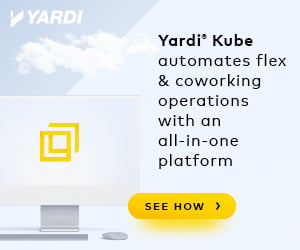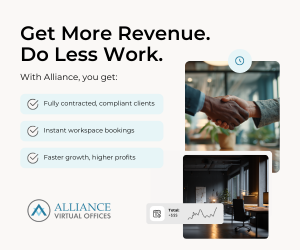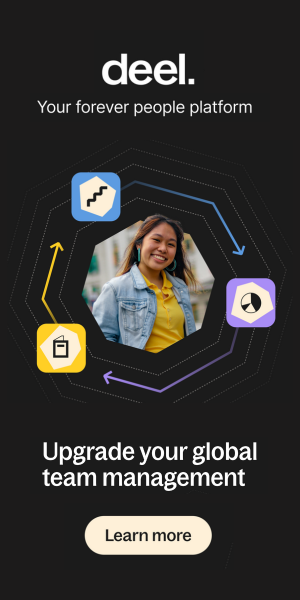- Pricing your coworking space strategically using psychological tactics can increase conversions.
- Offer tiered pricing and bundles to highlight value and guide customers to the best options.
- Use scarcity, urgency, and clear language to drive decisions and improve sign-ups for your space.
Let’s talk about something that’s challenging for everyone to deal with: pricing. It’s easy to think of it as just covering the bills, right? But here’s the thing: your pricing is actually shouting a message to potential members.
It’s not just about the numbers; it’s about the value you’re offering.
Think of it this way: your prices tell people who you are, what kind of experience they’ll get, and whether they’ll feel like they’re getting a good deal.
The “feel like” part is key — people don’t always make rational decisions. Psychology plays a huge role.
In fact, studies show that customers often rely on emotional cues rather than just logic when making purchase decisions. According to Harvard Business School professor Gerald Zaltman, 95% of buying decisions are made subconsciously. That means understanding those “psychological triggers” can be a game-changer for occupancy rates.
Here are some practical, no-fluff strategies to help you price your coworking space in a way that truly resonates with your ideal members.
1.Strategic Anchoring: Setting the Stage for Value
The “High Anchor” Effect
Imagine you’re giving a tour of your coworking space. You start with the “Executive Suite,” a premium private office with all the trimmings: panoramic city views, dedicated meeting room access, high-speed fiber, and 24/7 access. You price it at $1,000 per month. Now, most people won’t take this option, but that’s not the point. The point is to set a “high anchor.”
Next, you show them the “Dedicated Desk” area. This includes a dedicated workstation, standard meeting room access, and good Wi-Fi, priced at $400 per month. Because they’ve just seen the $1,000 suite, that $400 suddenly seems very reasonable.
It’s not just a price; it’s a bargain relative to the initial anchor. That’s the power of strategic anchoring.
The Decoy Play
Now, let’s look at the “decoy effect.” You want to guide people towards your “Dedicated Desk” package, which we’ll say is $400/month, and includes all the standard features. To make it even more compelling, you create two other options:
- Basic Desk: $380/month, but with severely limited features: basic Wi-Fi, no meeting room access, and limited printing.
- Enhanced Desk: $420/month, with slightly more features: extra meeting room hours and enhanced printing.
What happens? The “Basic Desk” makes the $400 “Dedicated Desk” look like a much better value. Why skimp on essential features for just $20 less? And the “Enhanced Desk,” while tempting, makes the $400 option look like the smart choice. You’re getting almost as much for a lower price.
It’s not about tricking people; in fact it’s about presenting options in a way that highlights the value of your preferred package. By strategically placing the decoy options, you’re guiding people towards the choice that benefits both them and your business.
2.The Power of Tiered Pricing and Bundling
Tiered Pricing: The Goldilocks Zone
You know how when you go out to eat, there’s always a small, medium, and large option? And most of the time, you end up with the medium? That’s the “Goldilocks effect” in action. People naturally gravitate towards the middle.
It feels safe, balanced. It’s not too much, not too little.
In your coworking space, you can use this to your advantage. Create three tiers: a basic package, a standard package, and a premium package. Think of it like this:
- Basic: The essentials. Maybe it’s a hot desk, limited printing, and basic Wi-Fi.
- Standard: Your sweet spot. A dedicated desk, a set number of meeting room hours, enhanced Wi-Fi, and printing credits.
- Premium: All the bells and whistles. Private office access, unlimited meeting room time, premium amenities, event access, the works.
Now, here’s the trick: put your most profitable package in the middle as the “standard” tier. Because people tend to go for the middle, you’re guiding them towards the package that’s best for your bottom line.
It’s not about being sneaky; it’s about making it easy for people to find the best fit.
Bundling: More Value, Less Stress
People love feeling like they’re getting a good deal, and bundling is a fantastic way to deliver that feeling. Instead of charging separately for every little thing, combine related services into packages.
For example, instead of charging per hour for meeting room access, include a certain number of hours in your standard and premium packages. Or, instead of charging for every print job, include a monthly printing credit.
Here’s how to make it sound appealing:
- Instead of saying, “Meeting room access: $25/hour,” say, “Standard package includes 5 hours of meeting room access.”
- Instead of saying, “Printing: $0.10/page,” say, “Premium package includes unlimited printing.”
Frame these bundles as “savings” or “added value.” Emphasize what they’re getting, not what they’re paying. “This package gives you everything you need to be productive,” or “Enjoy the convenience of unlimited printing.”
By bundling services, you’re simplifying the decision-making process and making your packages more attractive. By creating a sense of abundance you can make people feel like they’re getting a fantastic deal.
3.Scarcity and Urgency: Driving Action
The Power of “Almost Gone”
You know that feeling when you see “Only 2 left!” on an online store? It makes you think, “I better grab that before it’s gone.” That’s scarcity at work. And it works for coworking spaces, too.
If you genuinely have a limited number of desks or offices available, let people know. “Only 3 dedicated desks left in our vibrant community area!” or “Our private offices are filling up fast.”
It creates a sense of urgency. But here’s the key: be honest. Don’t fake scarcity; it’ll backfire. If you have plenty of space, don’t pretend you don’t.
Let people know that demand is high, and they shouldn’t wait too long if they’re interested.
Time-Sensitive Perks
We’ve all seen those “limited time offers.” They work because they create a sense of urgency. “Sign up this week and get a free meeting room booking!” or “Early bird discount: 10% off your first month if you join before [date].”
These offers give people a reason to act now. It’s about giving them a little nudge and making them feel like they’re getting a special deal. Use language like “limited time,” “this week only,” or “early bird.”
But again, be genuine. Don’t run “limited time” offers all the time; they’ll lose their impact. Make them truly special.
The Fear of Missing Out (FOMO)
People want to be part of something cool. They want to belong. And they definitely don’t want to miss out on fun events. That’s where FOMO comes in.
Highlight your member-exclusive events, workshops, and networking opportunities. “Join our community for weekly member lunches and exclusive industry talks!” or “Don’t miss our upcoming member appreciation event!”
Share photos and videos of past events on social media and your website. Show people what they’re missing out on. It’s about creating a sense of community and exclusivity.
The goal isn’t to make people feel anxious — it’s more about showing them all the amazing things they could be a part of.
4.Framing and Language: Shaping Perception
Words Matter: The Art of Framing
You know how you can say the same thing in two different ways, and it sounds completely different? That’s framing. It’s how you present information, and it can make a huge difference in how people perceive your coworking space.
Instead of saying “cost,” try “monthly investment.” It sounds more like they’re putting money into something that will pay off, not just spending it. And instead of focusing on the price itself, focus on the benefits. “This package gives you a productivity boost,” or “Enjoy instant access to our thriving community.”
Think about it: “Dedicated desk: $400/month” sounds okay. But “Invest $400/month in your productivity and join a community of like-minded professionals” sounds way better, right?
This shifts the focus from what they’re paying to what they’re getting. Use language that paints a picture of success, community, and productivity.
Visual Storytelling: A Picture’s Worth a Thousand Words
People judge a book by its cover. And in the world of coworking, your “cover” is your visuals; high-quality photos are non-negotiable.
Would you rather sign up for a space with blurry, poorly lit photos, or a space with bright, professional images that show off the atmosphere and amenities? It’s an easy choice.
Show off your space at its best. Capture the natural light, the vibrant community areas, the comfortable workstations, and the smiling faces of your members. People want to see themselves working in your space.
And don’t forget your package descriptions. Keep them clean, clear, and easy to understand. Avoid jargon and technical terms. Use bullet points to highlight key features and benefits. Make it easy for people to see what they’re getting and why it’s worth it.
You are selling a lifestyle, and a community, not just a desk.
5.Data and Iteration: Refining Your Strategy
Numbers Don’t Lie: Tracking What Matters
You can have the best pricing psychology in the world, but if you’re not tracking your results, you’re flying blind. So, what should you keep an eye on?
First, conversion rates. How many people are actually signing up after they inquire about your space? If you’re getting tons of inquiries but few sign-ups, your pricing might be off. Or maybe your tour or sales process needs work. Keep track of how many tours you give and how many of those turn into members.
Second, average revenue per member. This tells you how much money you’re making from each member on average. Are people opting for the higher-priced packages, or are they sticking with the basics? If your average revenue is low, you might need to tweak your package offerings or focus on upselling.
Listen to Your Members: Feedback is Gold
Your members are your best source of information. Don’t be afraid to ask them for feedback on your pricing.
Send out surveys or have informal chats. Ask them:
- “Do you feel like you’re getting good value for your money?”
- “Are there any services you wish were included in your package?”
- “Do you find our pricing structure clear and easy to understand?”
Their answers can reveal valuable insights into what’s working and what’s not. Sometimes, you’ll hear things you don’t expect.
You don’t need to take every suggestion, but you should listen and show your members that you care about their experience.
Never Stop Tweaking: The Art of Continuous Improvement
Pricing isn’t a “set it and forget it” kind of thing. It’s an ongoing process. Market conditions change, your space evolves, and your members’ needs shift.
Regularly review your pricing strategy. Look at your data, listen to feedback, and stay up-to-date on what your competitors are doing. Don’t be afraid to experiment with different packages, prices, and promotions.
It’s like tuning an instrument. Small adjustments can make a big difference in the overall sound. So, stay flexible, stay curious, and keep refining your strategy.
Optimize for Success
You’ve got desks, maybe some offices, a community. Now pricing it is where the magic happens.
That crazy-expensive suite you probably won’t sell? It makes everything else look like a deal. That’s not a trick, it’s just human nature. And bundling stuff together? People love feeling like they’re getting more for their money.
So go look at your prices right now. Seriously, don’t just sit on this. Change something. Try something new. You might be surprised at what works. And honestly? Your space deserves to be full.


 Dr. Gleb Tsipursky – The Office Whisperer
Dr. Gleb Tsipursky – The Office Whisperer Nirit Cohen – WorkFutures
Nirit Cohen – WorkFutures Angela Howard – Culture Expert
Angela Howard – Culture Expert Drew Jones – Design & Innovation
Drew Jones – Design & Innovation Jonathan Price – CRE & Flex Expert
Jonathan Price – CRE & Flex Expert














